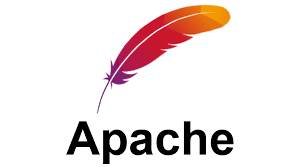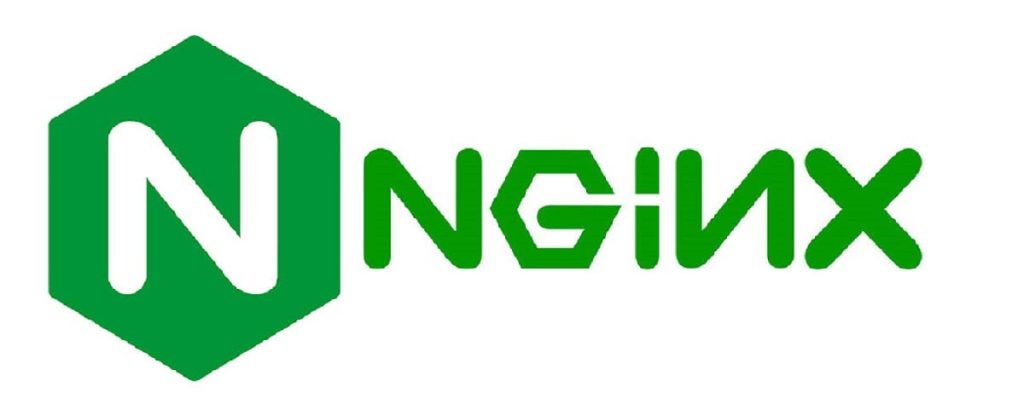In modern digital infrastructure, web servers are the backbone of hosting stacks. Every request that reaches a website,whether it’s an e-commerce platform, a SaaS application, or a content-driven blog,passes through a web server. These servers handle the critical tasks of processing client requests, serving static and dynamic content, managing connections, and enabling smooth communication between browsers and backend applications. Without them, the web as we know it would simply not function.
Two of the most influential players in this space are Apache HTTP Server (Apache) and NGINX.
- Apache, first released in 1995, quickly became the dominant web server of the early internet, powering a majority of websites through the 2000s. Its modular design, rich feature set, and wide community adoption cemented its role as the default choice for developers and hosting providers for decades.
- NGINX, introduced in 2004, was designed with a different philosophy,optimized for handling high concurrency, speed, and efficiency. It gained rapid popularity, especially as websites grew more dynamic and resource-intensive. Today, NGINX powers many of the world’s busiest platforms, from streaming services to high-traffic content delivery networks.
Even with the rise of cloud-native architectures, serverless computing, and container orchestration, the Apache vs. NGINX comparison remains relevant. Both continue to evolve, and their roles within hosting stacks are not mutually exclusive,often, they are deployed together. For developers, system architects, and IT managers, understanding their differences, strengths, and ideal use cases is essential for building hosting environments that are scalable, efficient, and resilient.
Apache in Hosting Stacks

Brief History and Legacy Role
The Apache HTTP Server, launched in 1995, was one of the first open-source projects to gain mass adoption. It became the foundation of the classic LAMP stack (Linux, Apache, MySQL, PHP/Perl/Python), which powered much of the early web. Apache’s design philosophy emphasized configurability and extensibility, making it a go-to choice for hosting providers and developers during the explosive growth of websites in the late 1990s and 2000s. For years, Apache was synonymous with web hosting, and even today, it remains deeply embedded in legacy infrastructure across enterprises and smaller hosting setups.
Strengths of Apache
Apache’s enduring popularity stems from several core strengths:
- Flexibility through Modules – Apache’s modular architecture allows administrators to enable or disable hundreds of modules to extend functionality, such as authentication, URL rewriting, caching, and SSL/TLS support.
- Granular Configuration with .htaccess – Apache uniquely empowers developers to adjust configurations on a per-directory basis using .htaccess files. This feature has been vital in shared hosting environments, where developers may not have root access to the server.
- Wide Compatibility – With nearly three decades of use, Apache is compatible with a wide range of operating systems, applications, and frameworks. Its maturity ensures that most CMSs (like WordPress, Drupal, Joomla) and countless web applications provide first-class support for Apache.
- Rich Ecosystem & Community – A vast knowledge base, long-standing documentation, and a large user community make troubleshooting and adoption straightforward, especially for teams with mixed levels of expertise.
Best Suited For
Apache continues to shine in scenarios where:
- Dynamic Content Handling – Its process/thread-based architecture, while not as lightweight as event-driven models, integrates seamlessly with languages like PHP, making it ideal for dynamic web applications.
- Traditional Hosting & Shared Environments – .htaccess makes it easy for individual developers on shared hosting plans to customize configurations without admin intervention.
- Compatibility-First Deployments – For teams working with legacy software, older frameworks, or applications designed with Apache in mind, it remains the most straightforward option.
In short, Apache is less about raw performance in modern high-concurrency environments and more about stability, configurability, and compatibility, which is why it continues to hold a significant place in hosting stacks today.
NGINX in Hosting Stacks

Designed for Performance and Scalability
NGINX was introduced in 2004 with a clear purpose: to solve the C10k problem—the challenge of handling 10,000 concurrent client connections efficiently. Unlike Apache’s process/thread-based model, NGINX was built from the ground up with an event-driven, asynchronous architecture. This design allows it to manage thousands (and even millions) of simultaneous connections with minimal memory overhead, making it one of the fastest and most scalable web servers available.
Event-Driven and Lightweight
At its core, NGINX prioritizes speed and efficiency. By using a non-blocking event loop instead of spawning new processes or threads for each connection, it dramatically reduces resource consumption. This makes it particularly effective in high-traffic scenarios where traditional servers may struggle under load. NGINX also excels at serving static files;HTML, images, CSS, and JavaScript at blazing speed, often outperforming other servers by orders of magnitude in throughput.
Best Suited For
NGINX has carved out its niche in modern hosting stacks, where performance and scalability are non-negotiable. It is best suited for:
- Static Content Delivery – Optimized to serve static assets quickly and efficiently, reducing latency and load times.
- Reverse Proxying – Often deployed in front of application servers to handle client requests, SSL termination, and caching.
- Load Balancing – Provides advanced load balancing features (round robin, least connections, IP hashing) to distribute traffic across multiple backend servers.
- Microservices and Modern Architectures – Plays a central role in containerized and microservices environments, where it routes requests between lightweight services and APIs.
The Modern Edge
Beyond its web server role, NGINX has become a versatile tool in modern hosting stacks. It’s frequently used as a gateway in distributed systems, integrates seamlessly with CDNs and caching layers, and supports features like HTTP/2, gRPC, and QUIC for next-generation web performance.
In essence, NGINX represents the high-performance, cloud-native era of hosting, where efficiency at scale and support for modern architectures make it the preferred choice for many developers and enterprises.
Key Differences at a Glance
When evaluating Apache and NGINX, the distinctions become clear across several dimensions:
- Architecture
- Apache: Uses a process- or thread-based model, creating separate processes or threads for each connection. While this offers flexibility, it can become resource-heavy at scale.
- NGINX: Built on an event-driven, asynchronous architecture, allowing it to handle massive concurrency with minimal resource usage.
- Apache: Uses a process- or thread-based model, creating separate processes or threads for each connection. While this offers flexibility, it can become resource-heavy at scale.
- Performance
- Apache: Performs reliably for dynamic content and integrates well with scripting languages, but can struggle under high connection loads.
- NGINX: Excels in high-concurrency environments, making it ideal for serving static files, acting as a reverse proxy, or managing traffic spikes.
- Apache: Performs reliably for dynamic content and integrates well with scripting languages, but can struggle under high connection loads.
- Configuration
- Apache: Supports decentralized configuration via .htaccess, empowering individual developers (especially in shared hosting) to adjust settings without root access.
- NGINX: Relies on a centralized configuration model, which is more efficient for performance but requires administrative oversight and is less flexible for shared hosting.
- Apache: Supports decentralized configuration via .htaccess, empowering individual developers (especially in shared hosting) to adjust settings without root access.
- Ecosystem Fit
- Apache: Strongly aligned with legacy applications and traditional hosting environments, where compatibility and per-directory control are important.
- NGINX: A natural fit for modern architectures, particularly containerized environments, microservices, and cloud-native deployments.
- Apache: Strongly aligned with legacy applications and traditional hosting environments, where compatibility and per-directory control are important.
In short, Apache emphasizes flexibility and compatibility, while NGINX prioritizes performance and scalability. Choosing between them often depends less on “which is better” and more on which is better for your hosting context.
Use Cases in Modern Hosting
When to Choose Apache
Apache is still highly relevant in contexts where flexibility and compatibility matter more than raw scalability. Ideal scenarios include:
- Legacy Applications and Sites – Many older CMSs, frameworks, and enterprise apps were built with Apache in mind, making it the path of least resistance.
- Shared Hosting Environments – .htaccess empowers developers without root access to customize redirects, security rules, and caching policies.
- Compatibility-First Deployments – Organizations running applications that depend on Apache modules or expect its configuration style benefit from sticking with it.
When to Choose NGINX
NGINX has become the preferred choice in performance-critical, cloud-native environments. It excels in:
- High-Traffic Websites and Applications – Its ability to handle tens of thousands of concurrent connections with low memory usage makes it ideal for scaling web traffic.
- Static Content Delivery – NGINX serves images, CSS, and JavaScript faster and with less overhead.
- Cloud-Native & Microservices Architectures – Frequently deployed as an ingress controller in Kubernetes or as a gateway in containerized setups.
- Reverse Proxy and Load Balancing – Provides SSL termination, caching, and traffic distribution across multiple backend services with advanced balancing algorithms.
Hybrid Setups: Best of Both Worlds
In many modern hosting stacks, the question isn’t strictly Apache or NGINX, but rather how they complement each other. A common hybrid approach is to use:
- NGINX as a reverse proxy in front of Apache.
- NGINX handles incoming client requests, manages SSL/TLS, serves static files, and filters out high concurrency workloads.
- Apache processes the dynamic content and leverages its modules and .htaccess for application-specific logic.
- NGINX handles incoming client requests, manages SSL/TLS, serves static files, and filters out high concurrency workloads.
This layered setup allows teams to take advantage of Apache’s flexibility while benefitting from NGINX’s performance edge, effectively bridging legacy compatibility with modern scalability.
Conclusion
The debate of Apache vs. NGINX isn’t about declaring a clear winner,it’s about understanding the strengths each brings to the table. Both servers remain highly relevant, even in a landscape transformed by cloud computing, containerization, and microservices.
- Apache continues to thrive in contexts where legacy compatibility, modular flexibility, and per-directory control are essential. Its long history and ecosystem support make it a natural fit for traditional hosting and applications built with the LAMP stack.
- NGINX, by contrast, represents the performance-driven, modern era of hosting. With its event-driven design, it excels at high concurrency, static content delivery, reverse proxying, and load balancing in cloud-native environments.
In practice, many hosting providers and enterprises no longer treat them as competitors but as complementary tools. It’s increasingly common to see NGINX sitting in front of Apache, combining NGINX’s scalability with Apache’s flexibility.
Ultimately, the choice isn’t about which server is “better,” but rather which is better for your workload, infrastructure, and long-term strategy. The smartest hosting stacks today often include both, ensuring that developers and organizations can adapt to evolving performance demands while maintaining compatibility with legacy systems.













